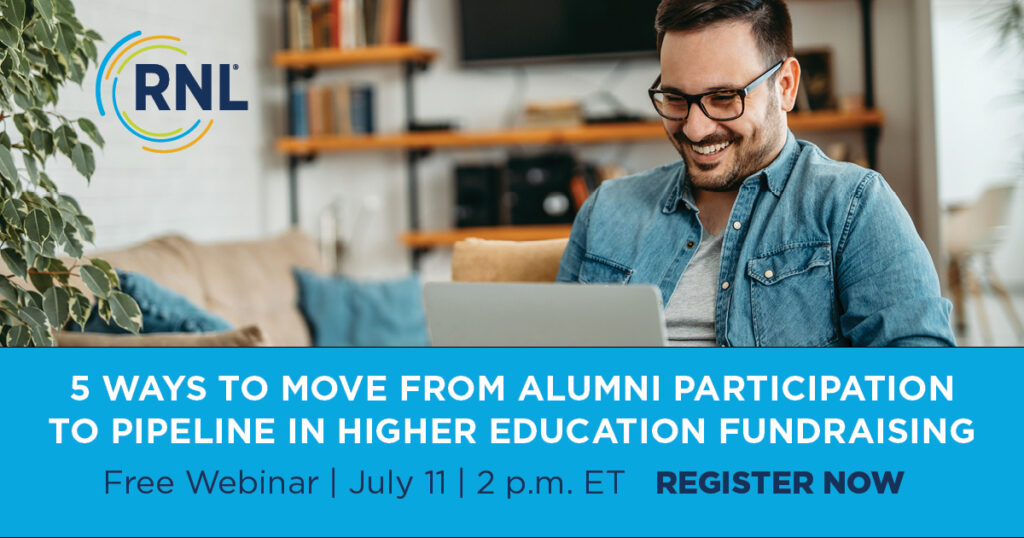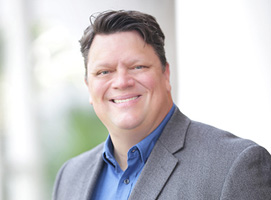fundraising
Forget Alumni Participation Rate and Focus on Why We Fundraise in Higher Education
When U.S. News & World Report removed alumni giving participation rate (APR) from impact to college rankings a few weeks back, it sent some higher ed development leaders into a tizzy. (That’s an old school term for ‘freaking out’).
To me, the reaction was concerning, I was surprised that such a primary reason colleges had annual giving programs was to chase the paltry 3 percent of the U.S. News score that was impacted by the the APR rate. I knew it was a factor, but since my career has also included a mix of graduate schools, major gift work, and other charitable verticals where this just isn’t brought up as much, perhaps I had underestimated the impact of this change in the rankings world for undergraduate institutions.
Had fundraisers forgotten why we raise money in the first place and why our donors give as we got caught up in the endless rankings game? While many fundraisers greeted the change with a sigh of relief, just about everyone was at a loss for the next step. In fact, in an RNL webinar with record attendance, 65 percent of attendees said they “didn’t know what they were going to do next” following the change.
Well, since undergraduate alumni make up the largest portion of higher education individual donors, it’s time to figure it out. This is our moment, fundraisers, our time to get back to basics. Let’s start with the reason we’re even in this business.
Focusing on the why of donor engagement keeps us focused on the why of giving
Simon Sinek’s book Start with Why: How Great Leaders Inspire Everyone to Take Action explores the concept of understanding and communicating your fundamental purpose: the “why” behind individuals and organizations. His central idea is that people are not solely motivated by what is being done or how it is being done, but rather by the underlying why—the reason behind our actions. Sinek suggests that by focusing on and articulating this why, leaders can create a sense of connection and loyalty among their followers or customers—in our case, donors.
Sinek introduces the concept of the Golden Circle, which consists of three layers: why, how and what. According to Sinek, most organizations communicate from the outside in, starting with what they do, followed by how they do it, and rarely mentioning the why. However, he argues that starting with why—communicating the purpose, belief, or cause—is what truly inspires people.
A clear and inspiring “why” not only attracts like-minded individuals but also serves as a guiding force in decision-making, strategy, and communication. The Golden Circle principle applies to both why our institutions fundraise and to why our donors give. By following this advice, organizations can better understand and define their core purpose, their reasons for existing and doing what they do. This gives donors something to direct their own purpose toward—and their philanthropic contributions.
Focusing on why also takes fundraising beyond “participation” to a whole new level of deep investment by donors into the real meaning and mission of what we’re trying to accomplish in the world.
When we give donors purpose, we will raise more and build a more robust donor pipeline
In the context of fundraising, this means clearly articulating the underlying cause or mission that drives your organization. Why does your organization exist, and what positive impact does it aim to achieve? Sharing the purpose behind your fundraising efforts can inspire potential donors by appealing to their emotions and values—connecting with their own why.
The “why” behind giving to charities varies by donor, but it most often involves helping those in need, supporting a cause they believe in, or a belief that they are making a difference in the lives of others. We should really be thinking about that when working on our giving messages, focusing on ways to amplify those purposes instead of just “give now.”
Complete the golden circle with the “how” and “what” of giving
Once you’ve clearly explained why, then you can complete the circle with your “how” and “what.” The “how” part is the strategies and approaches your organization employs to fulfill that mission, the things that are unique about your methods or programs to impact the cause. In education, this might be your specific teaching program, your key facilities and programs, or even key faculty or centers that make all possible.
Remember, the “how” should also be how donors take action in different ways. This could include making financial donations, volunteering time and skills, participating in fundraising events, or spreading awareness through social media. Volunteers and ambassadors can make a big difference to your program. In fact, the average RNL ScaleFunder partner last year received over 2,500 gifts from matching challenge donations through collaborative giving.
The “what” of giving are the specific initiatives, projects, or goals you are seeking support for. Be sure to clearly define what you aim to accomplish through your fundraising efforts and outline the tangible outcomes that donors can expect. The “what” for donors will shows when the initiatives donors choose and activities you describe align with their values, interests, or personal connections (their why) and they demonstrate clear impact, transparency, and accountability.
As participation becomes less important, it’s time to build meaning for donors in our engagement
Let’s go back to the changing rubric of U.S. News. Alumni Giving made up only 3 percent of the total rankings score, the lowest of all the categories. The highest percentage was Outcomes at 40 percent, which includes data on social mobility, student debt, and graduation and retention rates (particularly those of students with diverse socioeconomic backgrounds). U.S. News has indicated that they are on a path to increase their focus on inclusion and outcomes. We should be asking: what is the “why” behind the emphasis on those metrics?
It’s because that’s what the world cares about now. The “why” of higher education fundraising is an interesting intersection between rankings, the mission of university advancement, and the donors themselves. Education has the power to shape individuals and society, and donating to a college is an investment in the advancement of future generations by furthering the institution. It’s literally where the name of our field comes from.
By supporting colleges, donors contribute to the creation of education opportunities, the advancement of knowledge, and the cultivation of critical thinking skills. Philanthropy breaks down barriers to educational access and contributes to the overall betterment of society. The why of higher education development work is for us to become a conduit that connects donors’ commitment to opportunity and the pursuit of knowledge to programs that will advance innovation, foster generational leadership, and to develop solutions to societal challenges. We’ve never been asking donors to “participate.” We’ve always been asking them to make transformative change. And it’s time to start behaving that way.
So, for your next appeal, go beyond “participation,” and start with why. Then, complete the Golden Circle with a little how and what, and I predict you’ll be both attracting more donors immediately, and building long-term commitment to your cause that will lead to bigger gifts down the road.
The shift to engaging donor with purpose, and building a pipeline with intention in your donor base will be a key topic at my upcoming webinar on June 27 with friends from Eureka College and Rowan University. Register today to join us or receive the recording, and join in on the conversation.
What’s your best path to sustainable fundraising?
Let’s talk about how we can help you build a robust donor pipeline, engage the right donors at the right time, and chart a course to fundraising success year after year.

